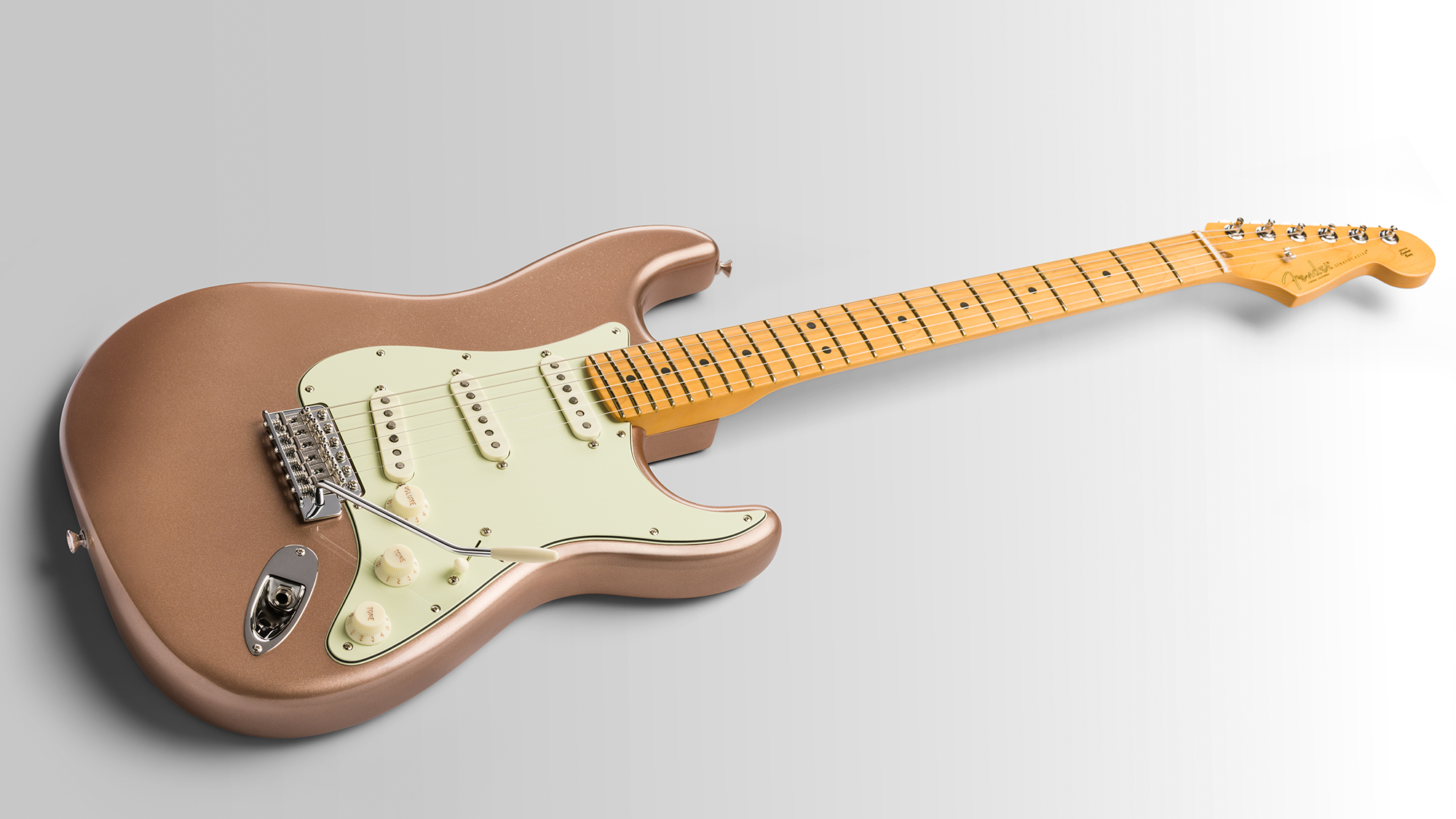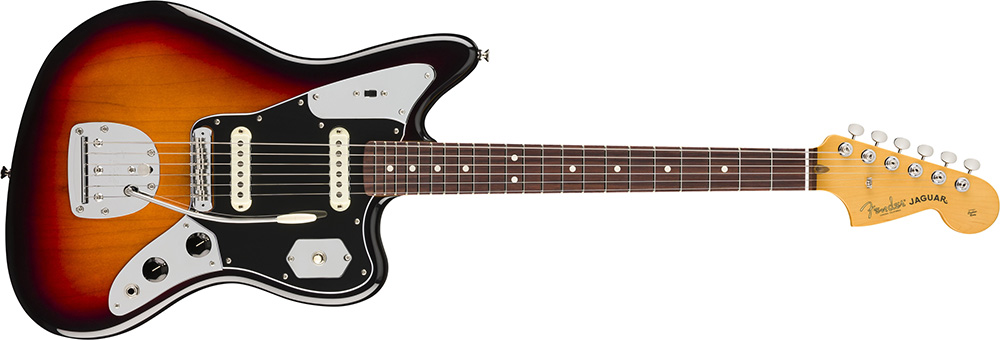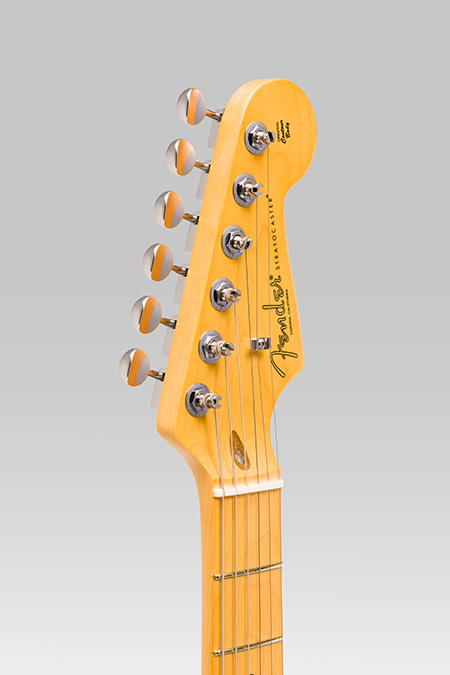“The entry point into the whole USA Fender offering”: Fender unveils the newest gateway to its American-made collection, the American Professional Classic series
New Coastline pickups, a successor to the Nashville Telecaster, and a double dose of streamlined offsets head up the newest starting point to Fender's most affordable USA-made instruments

Fender has restructured its made-in-USA electric guitar and bass guitar series with the announcement of the all-new American Professional Classic range.
Replacing the outgoing American Performer range, Fender’s American Professional Classic lineup arrives as the firm’s newly curated entry point into its USA-made catalog.
The American Professional Classic models sit above the Ensenada-made Player II range, which was refreshed back in 2024, and (at least at the time of writing) seemingly below the American Professional II series, which has been around since 2020.
As the entry point into the storied US firm’s American-made collection, the American Professional Classics represent a particularly interesting build proposition, and as per Fender’s own words, this range is all about reliability, versatility and playability.
The tag “Tested. Trusted. Night After Night” says it all, really. The ‘vintage-meets-modern’ vibe seems to be a popular buzz-phrase for such models, but here that is especially apparent: think classic Fender models with modern refinements.
The comprehensive new range is made up of nine models. In the electric department, there is a Stratocaster, Stratocaster HSS, Telecaster and Hotshot Telecaster, the latter of which serves as the direct successor to the three-pickup Nashville Tele.




There’s also a Jazzmaster and Jaguar, as well as a Precision Bass, Jazz Bass and Mustang Bass.
All the latest guitar news, interviews, lessons, reviews, deals and more, direct to your inbox!
There are a load of familiar appointments here, from alder bodies and maple necks to rosewood fingerboards and synthetic bone nuts, but, naturally, there are also a few twists in the spec sheet.
To nail the ‘tried-and-trusted workhorse’ design brief, Fender has tailored some key elements of its classic spec sheet in order to deliver a subtly enhanced playing experience. Chief among those is an enhanced neck profile, new Coastline pickups and upgraded hardware.



Specifically, the modern-C profile has been shaped for speed, fluidity and long-playing comfort. It’s been paired with rolled edges, a vintage 7.25” fingerboard radius and 22 medium frets for an altogether familiar-but-fresh Fender setup.
As for the upgraded hardware, the biggest deviation here are the staggered ClassicGear tuning machines, elected for a more precise tuning stability, but there are also some welcome slotted Telecaster barrel saddles. These are joined across the board by Strat, Tele, Jazz and Jag-specific accoutrements, with the latter two coming with orthodox tremolo systems and Mustang bridges.
Even more notable than the neck profiles and hardware updates are the pickups and electronics. Here, Fender has taken the opportunity to roll out a whole new production line of what it has officially badged the ‘Coastline’ collection.


An assortment of year and model variants have been rolled out, including ’57 Stratocaster, ’63 Telecaster, ’65 Jazzmaster and ’65 Jaguar pickups, including a more general Coastline humbucker.
The idea here is that the Coastlines will deliver a vintage feel with a little extra oomph. The single-coils, for example, are overwound for a slightly hotter tone that handles gain particularly well.
Speaking to Guitar World at the recent Fender Experience event in Tokyo Japan, Patrick Harberd, Senior Product Manager at Fender, noted, “In the pursuit of being vintage-looking and sounding, we knew we had to start with a vintage recipe – it’s all vintage-correct materials that are being used: you’ve got the bobbins, the fiber flatwork, Alnico pole pieces.



“On most of them, we’re using formvar magnet wire. We started with the American Vintage II series and the Pure Vintage pickups that come on those models, [but] we wanted to make them a little more modern-sounding and feeling.
“So we’re overwinding a little bit. I’d still say that these are very much in the wheelhouse of vintage output, but you’re gonna get a little bit of a softening and rounding off of the upper register. You’ll have a nice full-sounding pickup.”
On paper, it looks to be a worthy successor to the American Performer range and a solid first step on the USA-made Fender instrument ladder – an observation further supported by some of Fender’s stealthier changes.
For example, the Strat wiring is more modern in its approach, and the Jazz and Jag models have had their own tone systems streamlined – the Rhythm switch and slider controls have been changed – to make them easier for players to use. However, those offsets are still routed for traditional setups, should players wish to revert or mod them further down the line.

Speaking of that ethos, Harberd expanded, “This is the entry point into the whole USA Fender offering. Maybe someone has been playing a Strat or Tele and now this is their first Jag or Jazzmaster. The whole idea is that it’s making it a little more straightforward for somebody to use.
“The focus is on the pickups and the instrument, and getting all that beautiful jangly magic for the Jazzmaster and the Jag and just making it easier for for players to use. But the instruments are all routed to accept those [traditional] controls, if somebody wants to install the Jazzmaster rhythm circuit or the slider switches for the Jaguar controls.”
Tone and playability tweaks aside, Fender has also refreshed its finishes, paying homage to the way”classic finishes on vintage Fenders can evolve over time, just depending on the conditions they’ve been in”.
That means Fender considered everything from smoke in bar rooms and gigs to the acid content of someone’s sweat when producing a range of “mellower, gentler” versions of popular colorways, including Sherwood Green Metallic and Faded Firemist Gold.
“These look and sound like classic Fender guitars and basses, but when you get them into your hand, they feel like something that’s maybe a little more modern, but it’s still familiar.”
In Guitar World’s early review of the Classic Strat, Dave Burrluck summed up the subtle tweaks and upgrade with a glowing verdict, writing, “It’s a well-sorted fluid player while the ‘hot vintage’ Coastline pickups kick in a little additional fullness that works extremely well on rockier amp voicings without really losing any of the classic Fender voice played clean.”
Prices for the American Professional Classic line can be found below.
Head over to Fender to find out more.
- American Professional Classic Stratocaster – $1,499
- American Professional Classic Stratocaster HSS – $1,549
- American Professional Classic Telecaster – $1,499
- American Professional Classic Hotshot Telecaster – $1,549
- American Professional Classic Jazzmaster – $1,599
- American Professional Classic Jaguar – $1,599
- American Professional Classic Precision Bass – $1,599
- American Professional Classic Jazz Bass – $1,599
- American Professional Classic Mustang Bass – $1,599

Matt is the GuitarWorld.com News Editor, and has been writing and editing for the site for five years. He has a Masters in the guitar, a degree in history, and has spent the last 19 years playing everything from blues and jazz to indie and pop. During his GW career, he’s interviewed Peter Frampton, Zakk Wylde, Tosin Abasi, Matteo Mancuso and more, and has profiled the CEOs of Guitar Center and Fender.
When he’s not combining his passion for writing and music during his day job, Matt performs with indie rock duo Esme Emerson, and has previously opened for the likes of Ed Sheeran, Keane, Japanese House and Good Neighbours.
- Michael Astley-BrownEditor-in-Chief, GuitarWorld.com
You must confirm your public display name before commenting
Please logout and then login again, you will then be prompted to enter your display name.
